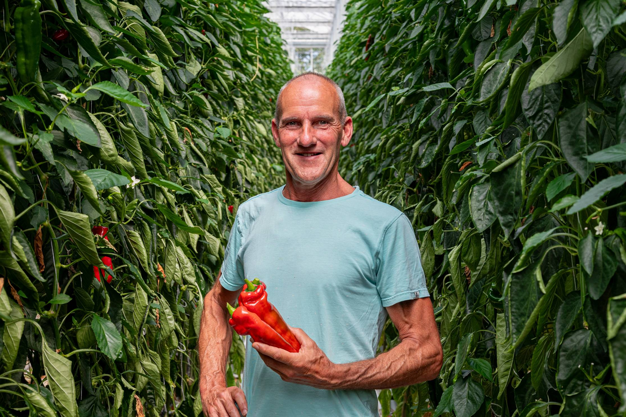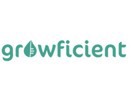When the moisture sensor used by SweetPoint needed replacement, the Dutch sweet pointed pepper grower opted for a new solution: sensors from Growficient. With these sensors, they now have insight into the water content at different points in the greenhouse and also the dry-out (or dry-back) percentage and the EC-value.
Wim Duijvesteijn, location manager at SweetPoint: "We have more insight into how the plants are doing."

Wim has been the Head Grower of the SweetPoint site in Honselersdijk, the Netherlands for 4.5 years. He is responsible for growing six zones of sweet pointed peppers. He is not unfamiliar with the sector, as Wim grew up in his father's greenhouses and had his own cultivation company with his brother until he was 50. He also worked in seed breeding and tomato growing.
Wim was immediately interested when the crop consultant of SweetPoint told him about Growficient. Wim: "After checking out some references, I invited Growficient for a meeting where I learned about the advantages of the sensors. They seemed like a good instrument to have. The next step was to convince my colleagues. That succeeded, and now we have been working with Growficient for almost a year."
More measurement points, more accurate insight
The main reasons for choosing Growficient were the possibilities for steering and getting insight into the water content of the (substrate) slabs. Wim says that: "Compared to last year, we have many more measuring points. Two sensors in each of the six zones in our greenhouse give us much more accurate insight into what is happening to the plants. When our old moisture sensor gave a deviating value, we had to make a decision based on that. Now we have 11 more sensors we can look at."
An added value that Wim would have liked to have had earlier, he says: "Last year, we had an incident where it turned out that one zone was accidentally not irrigating. We found that out far too late. And, of course, something like that happens on the hottest day of the year. If we had Growficient back then, we could have overcome this in time. For that reason alone, I think it's a nice system to have in place."
Better root system and less blossom-end rot
After starting with Growficient, SweetPoint has already made several improvements. Wim says, "Previously, we started irrigating in the morning at a fixed time. Since we work with Growficient sensors, we look much more at the dry-out percentages. Sometimes, that means you start irrigating earlier; other times, you start later. In addition, we skip the last irrigation shot more often because we see that the values are still good."
That fine-tuning of the irrigation results in a better root system. Wim continues: "Our plants look fresh and healthy this year, and the root system also looks good. We notice this, for example, by the fact that we have less blossom-end rot. Despite having had 15 percent less light than last year due to the dark, wet spring. We benefited greatly from the sensors' information during that period."
Wim hopes to experience further benefits from the strong roots in the coming months. He says, "If you make a mistake in September or October, the crop may just lose vigor and start to welt. Then your production is over. Because we now have a good picture of the dry-out of the slabs and can manage it better, I expect that we can keep the roots healthy until the last moment and thus also achieve a good final production."
New insights due to dry-out graphs
Wim checks the Growficient dashboard several times a day to get the most out of the sensors. He says, "I especially look at the dry-out in the morning. I also regularly call up the graphs with the EC development over several days. Besides that, I am happy with the app. Especially on weekend duty, I often check to see how things are going. Getting a notification if you fall below a set value is also handy. That way, you always have a good overview of everything."
The sensors appear to be useful, but have they provided Wim - despite a lifetime of experience in cultivation - with any new insights? He continues: "Yes, I'm still learning new things. In the past, I assumed that a plant always evaporated more when it was warm. With the sensors, I see that this is not necessarily true. For example, the dry-out moves differently than I expected when it is very humid. That's very valuable information we can use to optimize the cultivation further."
To further shape that optimization, Wim hopes for something else in the future. He concludes, "Ideally, we want to automate the irrigation using the data from the sensors. I am thinking, for example, of a self-learning system, which, combined with the current weather conditions and the weather forecast, can plot an ideal line. By following this line, we keep the water content stable while still having our control over the irrigation."
For more information: Growficient
Growficient
[email protected]
www.growficient.com
